Support Us
Since 1979 more than 140,000 animals have been treated by Wildlife Rescue.
Thanks to the support of individuals like you, Wildlife Rescue can provide a lifeline for animals in distress.
Spring is here—temperatures rise, the sun shines longer, and nature bustles with excitement after a long winter slumber. But, for wildlife in search of food, mates, and places to raise their young, this beautiful season is also full of peril.
For babies like the trio of Dark-eyed Juncos featured in this story, competing human activity can make urban areas an especially challenging place to grow up.
Thankfully, a generous group of donors has an incredible opportunity for you to make your gift go even further. From now until May 31st, every dollar up to $30,000 will be MATCHED, which means you can double your impact for wildlife in need this spring!
Friend, your generosity changes everything for sick, orphaned, and injured wildlife. Thank you for giving them the specialized care they need to live full lives in the wild. As animal activity ramps up this spring, Wildlife Rescue needs to be prepared for anything—and your help is essential to respond to the growing number of emergencies.
Will you give a special gift that gets matched today?
Early one spring morning, a local woman heard twittering calls outside her home. Curious, she opened her door to find three little birds nestled sweetly in a hanging flower pot on her doorstep. They were baby Dark-eyed Juncos! For days, the finder watched in awe as the parents swooped in and out of the nest, stopping briefly to feed them meals.
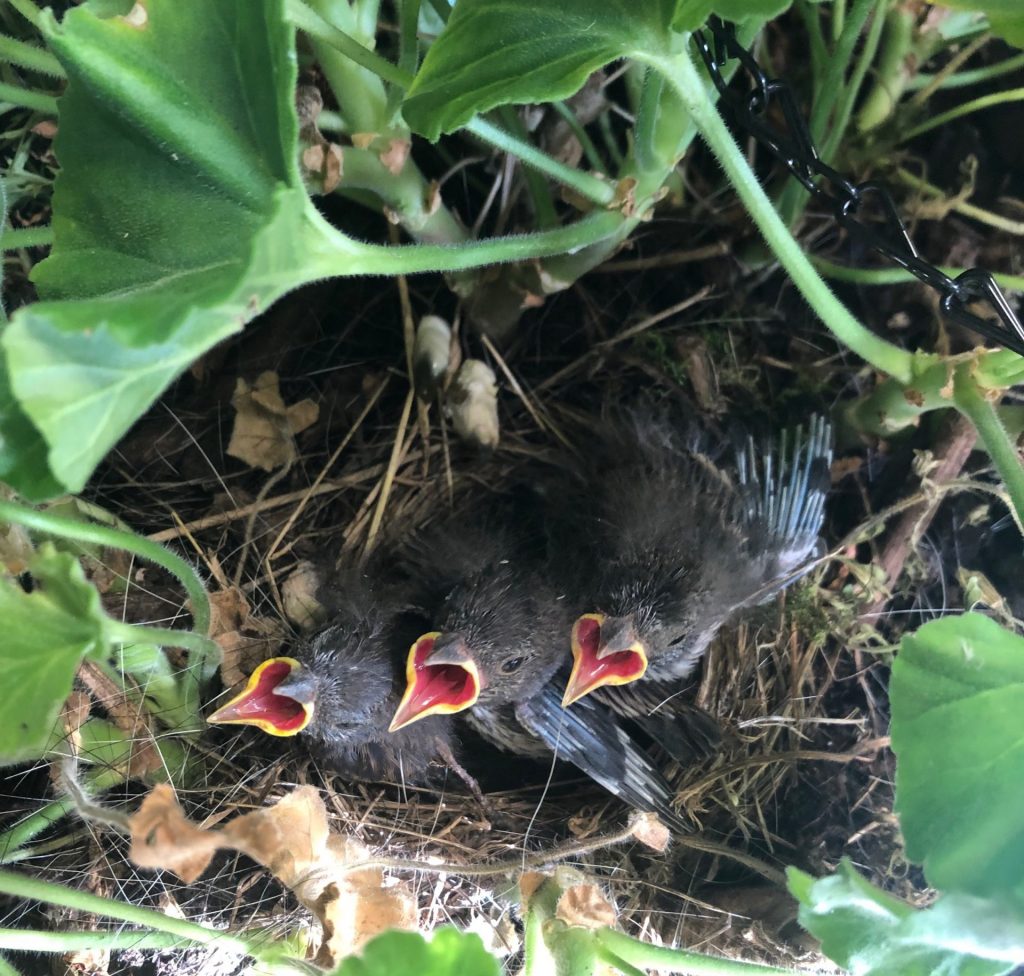
Activity at the nest was non-stop, until one morning they seemed to miss their breakfast feedings. Then lunch came and went. When she checked on the babies, their tiny beaks opened and closed as they waited for their parents to return with food. As the day wore on, their chirps grew louder and more desperate.
By dinner time, the woman was starting to worry. “The parents have been gone too long…Something terrible must’ve happened,” she thought. Wild parents never abandon their nests without a serious cause: sometimes they’ve been hit by a car, caught by a cat or had a fatal collision with a window. Whatever the reason, when babies appear to be left alone it’s important to confirm with an expert before intervening.
The following day, the young birds were noticeably quiet. They no longer had the energy to call for food. The woman knew they must be starving. After a quick call to our Helpline, it was decided that the whole basket should be brought to our hospital to ensure the nest was not disrupted. These babies simply wouldn’t survive without immediate care.
When they arrived, the nestlings were handed to our expert wildlife team, who confirmed the babies were dehydrated and starving. This team was ready to provide urgent medical intervention and the round-the-clock care they needed to survive!
Gifts like yours meant everything to these vulnerable Dark-eyed Juncos. Time was of the essence for their first week in care. Initially, they had to be fed an expensive insect-based diet every 15 minutes over the course of a 14-hour period. That’s about 500 mealworms a day!
Thanks to people like you, all three babies received the care and attention they needed. And after 24 days, the little trio was deemed healthy enough to be released back into the wild! Many more baby wildlife will need help over the coming months, which means your support today is urgent.
By donating today, you can double your gift and help ensure that every baby animal has the opportunity to thrive. Please give generously!
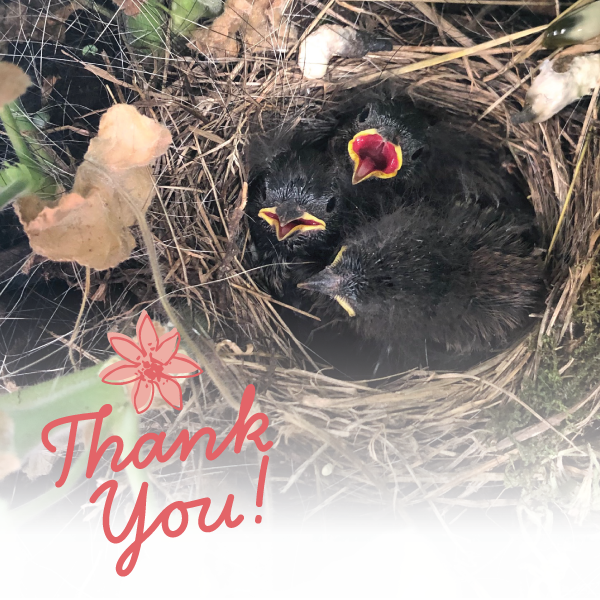
In late February, Wildlife Rescue was alerted to a Great Blue Heron whose beak was badly entangled in netting. Our rescue team was dispatched immediately to assess the situation and attempt rescue. However, since the bird was fully flighted, capture was proving difficult— the bird would simply fly off when approached.
It took two-long weeks, but thanks to our highly skilled and experienced rescue team, the entangled heron was successfully captured! While originally spotted in Vanier Park in Vancouver, this bird was finally captured over 10-kilometres away in North Vancouver– proof of just how challenging this capture was and the hard work it took to bring them to safety.
We also had the support of many compassionate wildlife lovers in the community who monitored the situation and kept an eye on the heron.
A big thank you to all our dedicated rescue volunteers, caring community members, and everyone involved in coordinating this momentous rescue effort! Together, we did it!
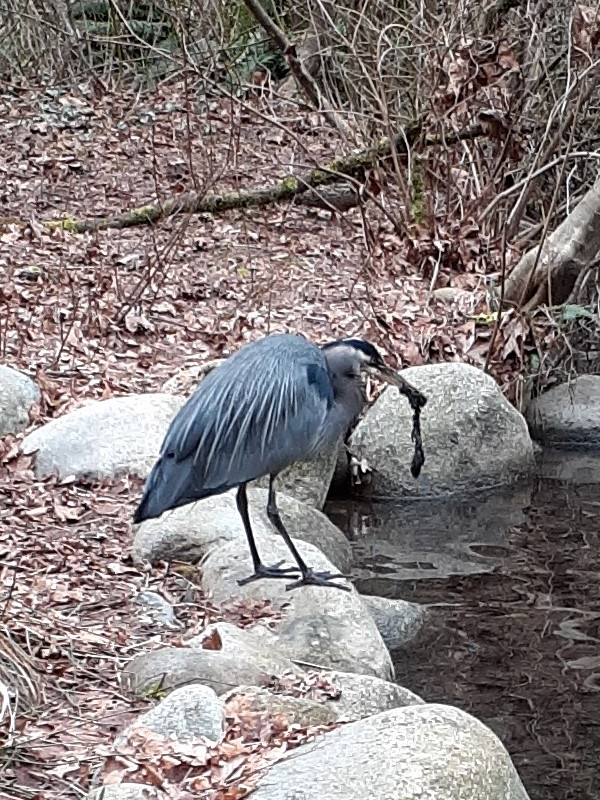
Heron in Vanier Park, Vancouver; Photo by Rescue Volunteer Liz G
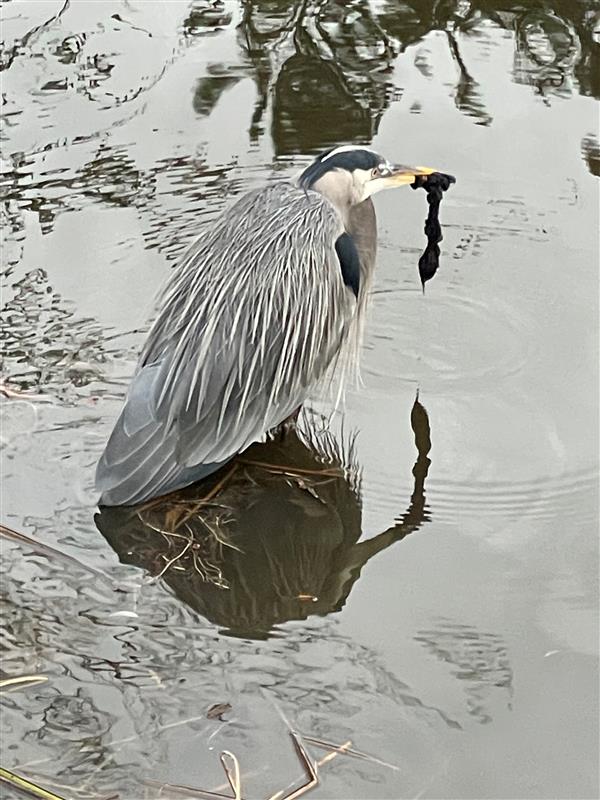
Heron in Murdo Frazer Duck Pond, North Vancouver; Photo by Rescue Volunteer Cathy
Upon intake, the netting was removed and it was revealed that there was no injury to their beak! The heron was in surprisingly good shape, just a little thin as hunting and eating with the entangled netting would have been difficult.
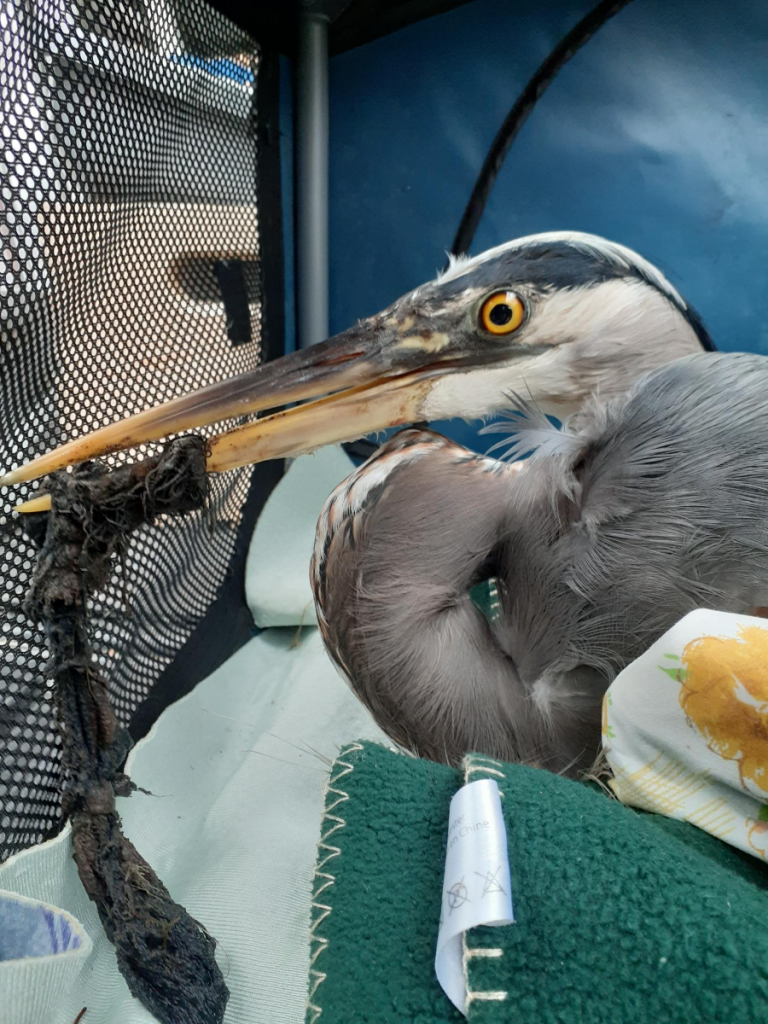
Photo by Rescue Volunteer Liz G.
This Great Blue Heron spent the next week recovering in our “Raptor Pen” – our largest enclosure that allowed them to maintain their flight muscles. This bird ate very well and quickly gained back some much-needed weight!
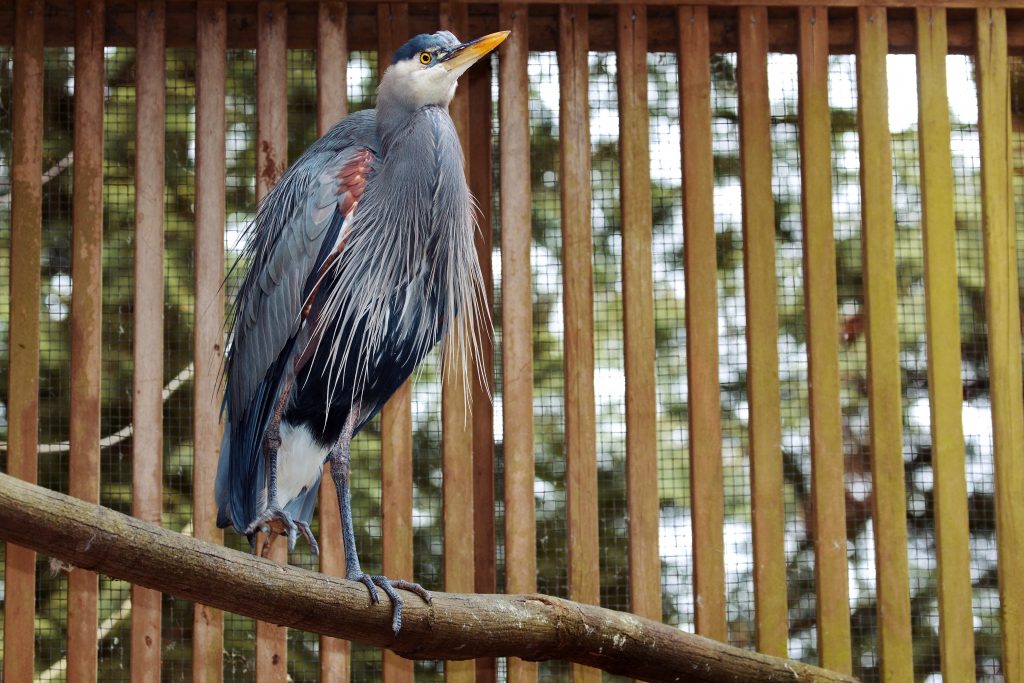
Photo by volunteer photographer Paul S.
After a short stay this heron had a clean bill of health and was released back to nature.
Watch the video of this Great Blue Herons release >
Complicated rescue efforts such as these are only made possible thanks to the generous donations of wildlife lovers like you.
Thanks to the continued support of wildlife lovers like you, this Great Blue Heron gets a second chance at a natural life. Thank you!
At the beginning of June, Wildlife Rescue received possibly the cutest little duckling. Found orphaned on the side of the highway with no parents or siblings in sight, this little one was transported all the way from Whistler to Wildlife Rescue hospital. After a thorough health inspection, it was determined this bird was healthy, just slightly dehydrated from its long journey from Whistler to Burnaby.
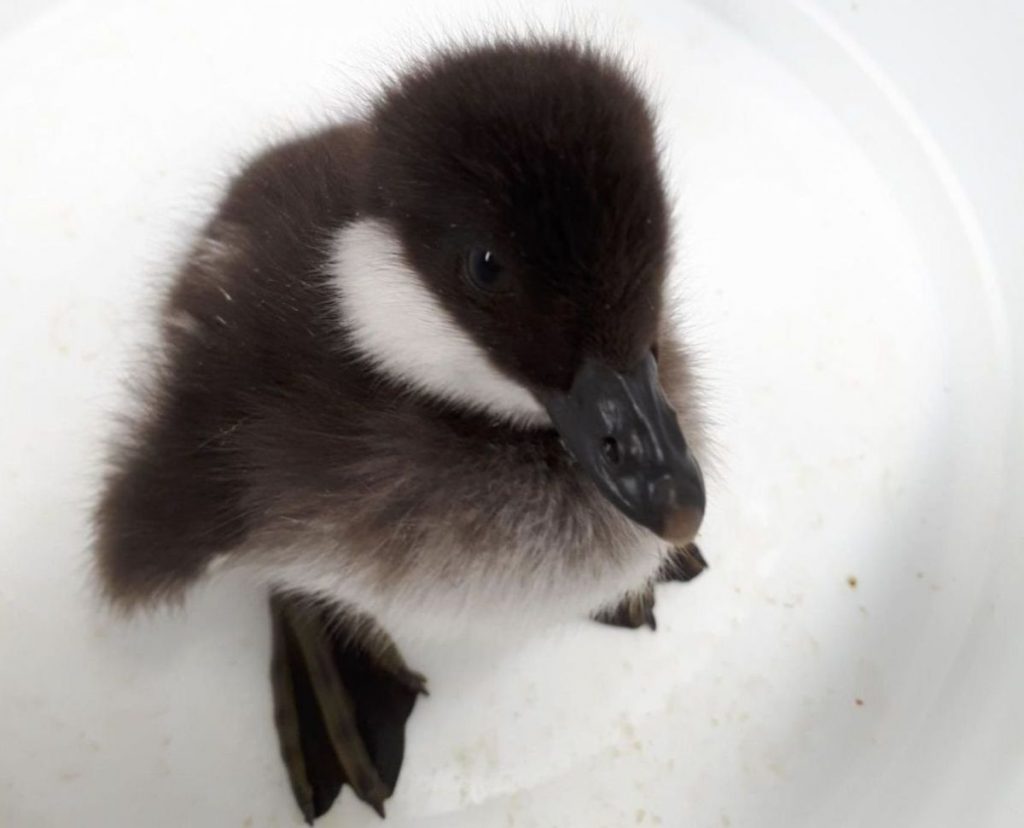
In circumstances like these, the best plan of action for healthy ducklings is to return them to their parents or foster them with another family immediately. Wildlife Rescue Support Centre staff and volunteers worked diligently for 7-days straight trying to find a suitable family to foster this little duckling with, even venturing back out to Whistler to look for a family, but there was no hope.
The orphaned duckling remained at Wildlife Rescue, where it was raised by Wildlife Rescue staff and volunteers. To provide a supportive family group environment for this duckling, they were housed with Wood Ducks who make great companions.
Caring for Sea Ducks is complicated and intensive due to their unique biology and natural behaviours.
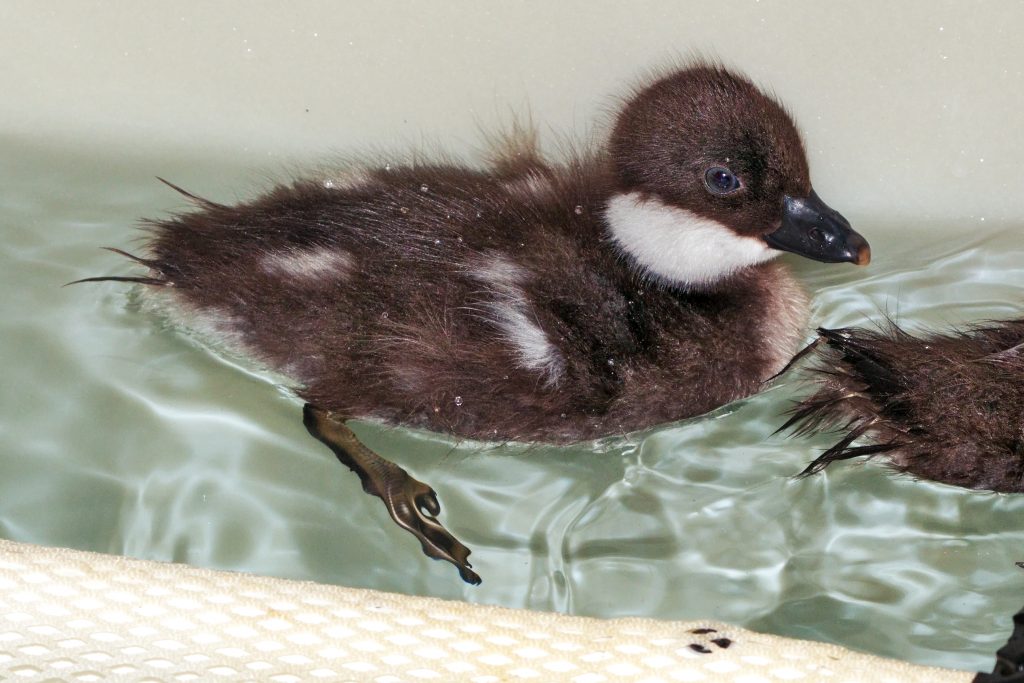
June 18th, 2021
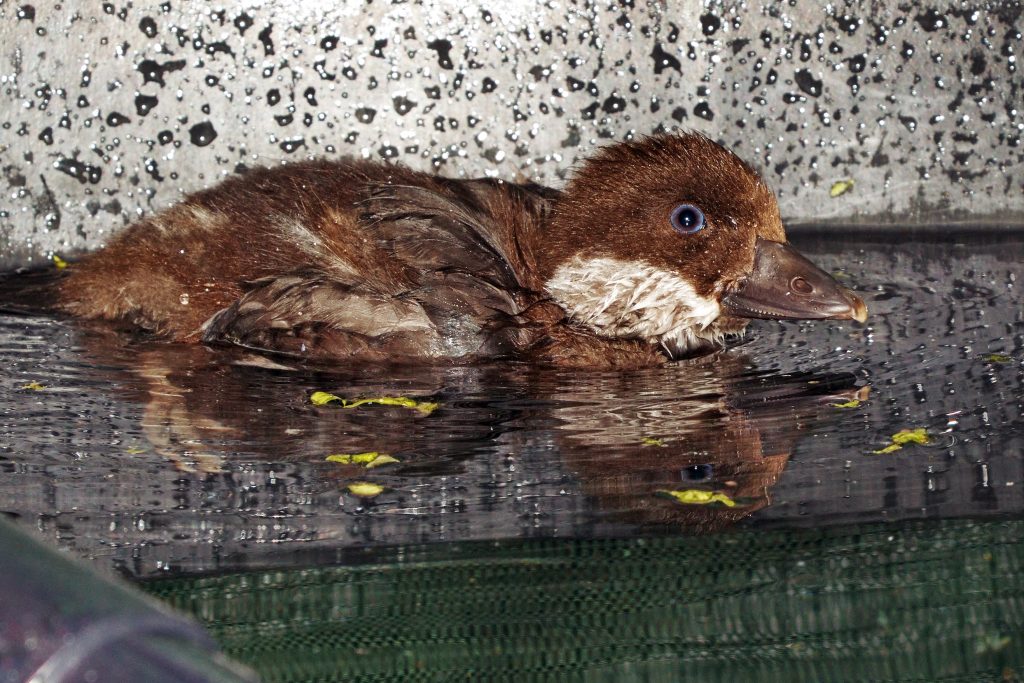
July 2nd, 2021
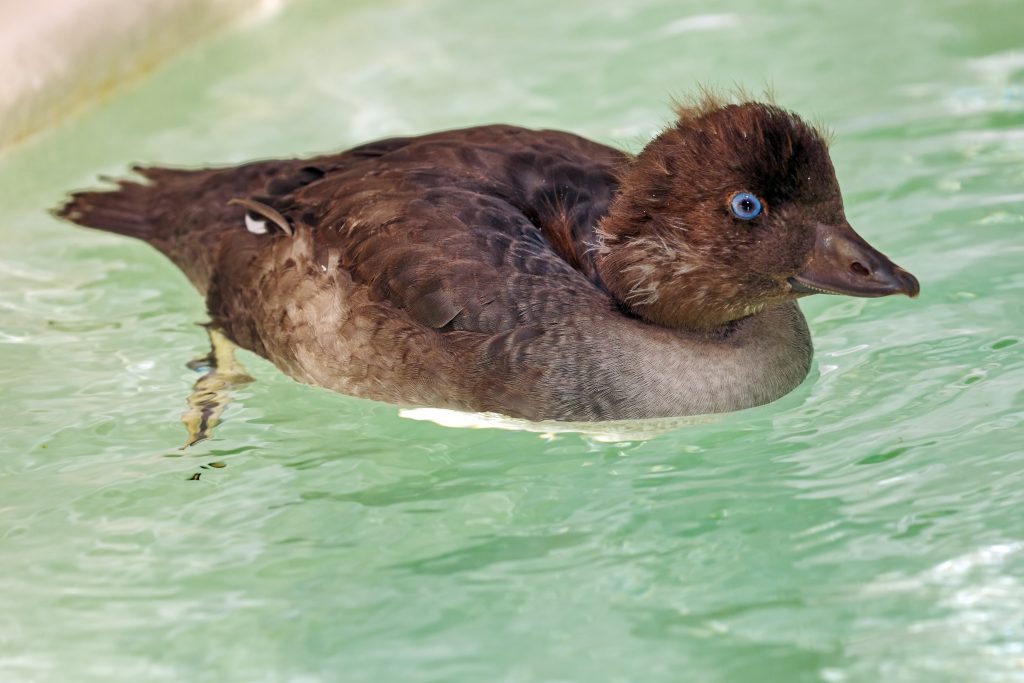
July 23rd, 2021
The Barrow’s Goldeneye (previously thought to be a Common Goldeneye) now looks like a completely different bird! Duckling Goldeneyes have dark heads with fluffy cream-white throats (as seen above). This juvenile duck lost its baby colouring, and developed mostly brown plumage! Immature Goldeneyes still lack the namesake golden-eyes of adults.
After almost two months in care, our Goldeneye was released back to nature. She took off immediately, spreading her wings out, happy to be back in nature where she belongs. Good luck little one!
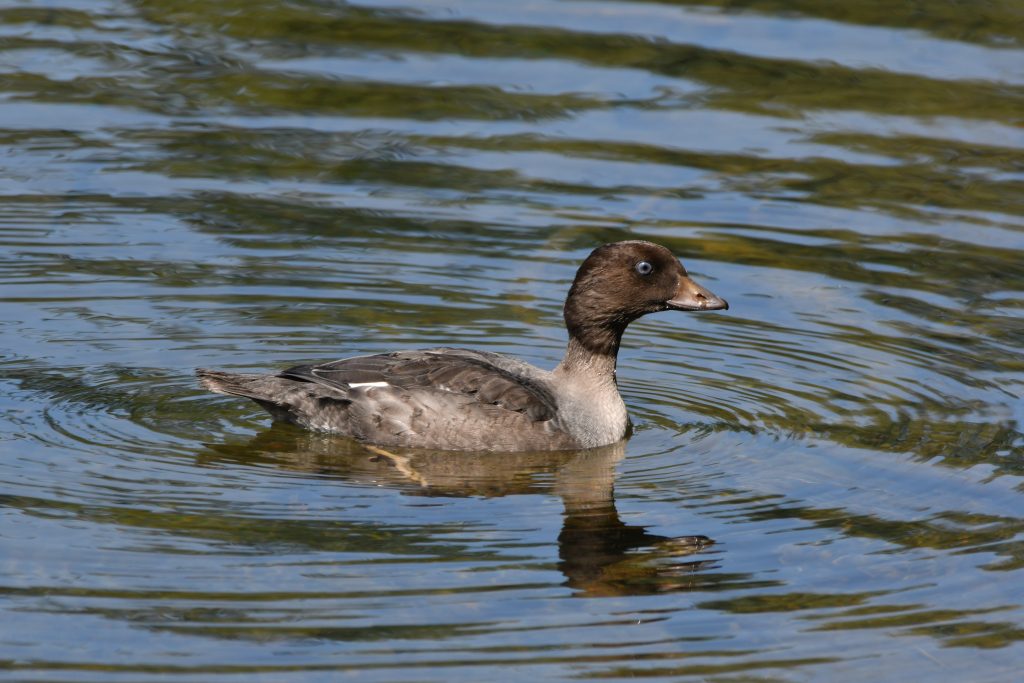
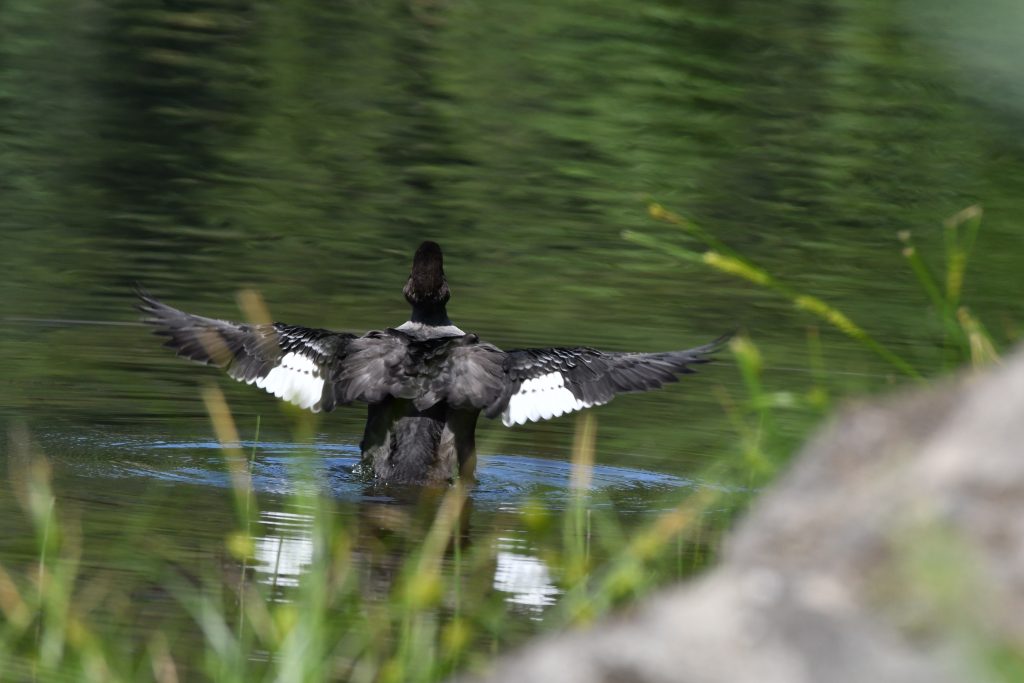
After an extended stay in care, the Common Raven from Haida Gwaii has been successfully released back to nature.
Glue traps are a pest control measure using glue as the method of trapping. The pest gets caught in the glue and then the trap is thrown away. There are two different types of glue traps; flypaper and glue-tray mouse traps.
While they seem simple, glue traps are one of the most inhumane methods of pest control. The animal, once caught in the trap, usually dies of starvation and dehydration over several days. The traps can also snare other wildlife. Since flypaper traps insects, insect-loving birds can become entangled in the flypaper while attempting to feed.
Double-crested cormorants make their nesting homes on the coastlines of southern BC. They are an iridescent greenish-black, with a bright yellow beak, and white tufts over their eyes during the breeding season. They like to hang out on rocky shorelines and dive for fish.
Spring is baby bird season! With an abundance of life outside, it is a great time to go birdwatching and enjoy nature’s busy season!
Recently, a wildlife lover came across a Fledgling Common Raven. The sight of the big beautiful bird caught their attention and they stopped to watch for a while. However, the bird started to concern the individual as it seemed as if the bird may be injured. It was hopping on the ground, unable to fly off so the concerned individual caught the corvid and brought it to Wildlife Rescue.
Every year, signs of spring fill the air as we feel the temperatures lifting, hear the chorus of year-round and migratory birds returning and the smell of fresh green grass as we step outside. It’s the perfect time to welcome this revitalizing energy into your backyard by preparing for these feathered friends.
In British Columbia Chickadees, Sparrows, Starlings, Robins, Northern Flickers, Bushtits, Finches, Steller’s Jay and Hummingbirds are a few of the common backyard birds looking for mates and shelter to thrive during the busy season.
A magnificent sight on British Columbia’s coastline, Great Blue Herons are a symbol of the brilliance of nature with their wide wings, “S” shaped necks and beautiful grey-blue feathers. Their peacefully still stance in the water and their incredible blue plumes set them apart.
Recently, a Great Blue Heron was admitted into Wildlife Rescue’s care after being found trapped and hanging from a tree. Thankfully, after being treated with pain medication and rest, the Great Blue Heron was able to be released back to nature where it belongs.
Found entangled in netting, a barn owl was recently brought to Wildlife Rescue in critical condition where the non-responsive animal was treated for dehydration and hypothermia. Unfortunately, cases like this one are common – netting such as plastic six-pack rings and even single-use masks can be fatal for wildlife. In fact, barn owls are so at-risk that they are featured as one of the many species on British Columbia’s red-list.